Download a Blank Family Tree Template
December 5, 2012 by Chris
Filed under Latest News
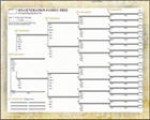 Hello there. Thank you for visiting us here at Genealogy Beginner. We have a great 6-Generation family tree that you can download. Click here to download your template
Hello there. Thank you for visiting us here at Genealogy Beginner. We have a great 6-Generation family tree that you can download. Click here to download your template
Continue reading “Download a Blank Family Tree Template” »
Facebook Drawing – Sylvania 2GB MP3 Player/ Voice Recorder
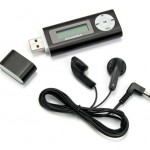 We’ve just reached 100 Facebook fans and to mark the occasion we’re doing to do a drawing among those who have joined the FB Genealogy Beginner community.
We’ve just reached 100 Facebook fans and to mark the occasion we’re doing to do a drawing among those who have joined the FB Genealogy Beginner community.
Click “Like” or add a “Comment” on our genealogy Facebook page. We’ll do the drawing Monday 12/05/11 and mail this great Synvania 2GB MP3 Player/ Voice Recorder to the lucky winner.
We think you should use this to whisper verbal notes excitedly from the library stacks as you dictate the details of a previously unknown ancestor. However, you might find the MP3 player a great way to bring your music along on your next walk. You could give it away as a gift for the holidays but we think this is something you’ll want to keep for yourself.
Regardless, make sure you leave a comment or “like” this post on FB and include yourself in the drawing. We’ll announce the winner on Monday.
Photo Source: Woot.com
St. Bridget the Virgin? Take Two
The following was contributed by an Irish relative in County Sligo, Ireland. He will be a guest contributor from time to time. The following was written in response to a comment on an earlier blog post of July 22, 2008.
A visitor has made a welcome comment as to what evidence I have regarding St. Bridget’s status. There is no direct evidence, but there are two bits of deductive evidence which I consider compelling.
What direct evidence we have comes from the Lives of the Saints and these were written a hundred or more years after the death of the Saint by a successor with a view to strengthen the particular institutions claim to primacy. Copies exist many hundreds of years old with some fragments going back to the eighth century. They are, however, regarded as not very reliable and as being full of exaggeration and dubious miracles. In St. Bridget’s life we are told that she was a head-strong independent young princess in conflict with her father when she met St. Patrick and was converted from paganism.
Another powerful Celtic woman was Queen Maebh (Maeve) of Connaught. She personally assessed the prowess of one hundred princes before deciding to marry Ailill and then went to war with Ulster because Ailill had a better bull than she had. The story of that war is told in the Táin. In pagan Celtic Ireland it was impossible for a princess to reach adulthood and still be a virgin.
One of the series of legends we have are the Imramha. They are a series of curragh voyages of adventure and they are a bit like a James Bond film in that they follow a formula. Among others they usually visit the Island of Apples (apples were a symbol of abundance in Celtic times), the Island of Fire, the Island of Ice and the Island of Women. The Island of Women was considered to be full of magic and mystery. In the Voyage of Bran the women did not want the men to return so when they tried to row away after a year the women threw magic ropes that stuck to the curragh and hauled them back. One time a crew member grabbed the rope before it touched the curragh and with his sword Bran chopped off the crew member’s hand and so they escaped. However, when they got home a hundred years had passed and as soon as they stepped ashore they became very old men.
In another story there were three women for every man and the men found the women’s demands so exhausting that they went on strike. The strike was settled when it was agreed that the men would be allowed to hunt for one day a week. In another there were seven women to every man and with his crew half dead the skipper went back on his own to get a second crew to relive the pressure on his first crew. St Brendan the Navigator’s voyages are in this tradition and he visits the Island of Fire and the Island of Ice but unfortunately missed the Island of Women.
I have tried to imagine the monks in their freezing scriptoriums solemnly writing down the sexual antics contained in the oral legends.
I was lucky enough to grow up in a community which had the last echoes of a Gaelic past and the cult of St. Bridget. Her cult had absorbed much of the Celtic goddess Bríd the fertility goddess, mother earth the mother goddess. I was genuinely taken aback when I walked into the church in Portugal and saw St. Bridget the Virgin because I had an image of St. Bridget as a mother figure and giving a mother’s protection to Ireland.
See more Irish family history articles and lessons learned in earlier posts below and in the archives.
(This posting is from The Ballycastle Blog: Irish Genealogy and More. Click the link to view the full article from its original source.)
Passover memories: NYC, Teheran, LA
The season is upon us – only one day left until Passover-Pesach-Pessah-Pesaj (choose your favorite spelling!) begins. Among Conversos in the US and elsewhere, the holiday is known as Santo Moises, and families gather to tell the story of Moses behind closed doors and covered windows.Pesach is the ultimate Jewish family immigration story as…
Read more at http://tracingthetribe.blogspot.com
(This posting is from Tracing the Tribe – The Jewish Genealogy Blog . Click the link to view the full article from its original source.)
Learn How To Research Your Family Tree
September 5, 2011 by Chris
Filed under General Tips, No Header
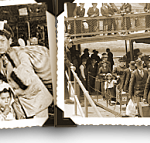 The team at Genealogy Beginner is proud to provide the first, step-by-step digital genealogy training that is also fully supported by professional genealogists. We’ve taken over 8 years experience delivering genealogy training services and guides and combined them into the most comprehensive, yet fun, and easy to follow genealogy training available online:
The team at Genealogy Beginner is proud to provide the first, step-by-step digital genealogy training that is also fully supported by professional genealogists. We’ve taken over 8 years experience delivering genealogy training services and guides and combined them into the most comprehensive, yet fun, and easy to follow genealogy training available online:
Unit 1: Introduction to Genealogy
- Lesson 1-1: Genealogy Standards and Guidelines. (What you need to Know First)
- Lesson 1-2 : Recording your Family Tree; First Steps ( Family Group Sheets)
- Lesson 1-3 : Organizing For a successful search (Developing an organization System)
- Lesson 1-4 : Your Tree; Staring your first Search (All About Pedigree Charts)
- Lesson 1-5 : What’s in a Name: Surname Searches ( All about Surname Searches)
- Lesson 1-6: What’s in a First Name? ( How to use in searches as Hints and clues)
- Lesson 1-7: Where did they go? Where is that? ( Searching By Place)
- Lesson 1-8: A Look at Genealogy Software ( The good, The Bad and the Ugly)
Unit 2: Introduction to Research Resources
- Lesson 2-1 : Begin at Home : Local Research
- Lesson 2-2 : Expanding Your Search; States/Provinces
- Lesson 2-3 : Going the Distance; National Records
- Lesson 2-4 : Worldwide; Your growing Tree (done copy to here)
- Lesson 2-5 : Making Connections; Reaching out (Correspondence and Repository Logs)
- Lesson 2-6 : Information Sharing (news Groups/Message Boards & Social Networking in Genealogy)
- Lesson 2-7 : Hereditary and Lineage organizations ( It may already be done)
- Lesson 2-8 : GEDCOM 101
Unit 3: Records 101
- Lesson 3-1: Vital Records and Old Parish Registers; Digging Deeper
- Lesson 3-2a: Finding Facts in Government Death Records
- Lesson 3-2b: Death records and funerary customs in the Old Parochial Records and Kirk Sessions.
- Lesson 3-3: Additional Death Record information sources, (Monumental Inscriptions and Obituaries wills, probate records & deeds)
- Lesson 3-4: In The Field; Using (Cemetery tracking forms)
- Lesson 3-5: I DO – A look at Marriage Records
- Lesson 3-6: Bans and Proclamations
- Lesson 3-7: Finding and using Birth Records
- Lesson 3-8 Baptisms and Christenings
Unit 4: Record types – searching, requesting and using information types
- Lesson 4-1 : Going to Church; Following Their Faith ( Searches by Denomination)
- Lesson 4-2 : The LDS; The Largest Resource (What it & What You can Find)
- Lesson 4-3 : LDS Continued (How to Search it)
- Lesson 4-4 : How Did They Get Here (Immigration, Emigration and Naturalization)
- Lesson 4-5 : Ellis Island
- Lesson 4-6: Across the Waves (Ships lists, Passenger lists, Ports of Entry and Departure)
- Lesson 4-7: Staking their Claim ( Land Records, Homesteading Records, Land Grants, Deeds and Petitions)
- Lesson 4-8: Tax Records ( What they contain and why they are important)
Unit 5 Record Types Continued
- Lesson 5-1 : Using the Census ( Introduction and instruction)
- Lesson 5-2 : Tracking a Military Past (military Records)
- Lesson 5-3 : Where they worked (Using occupational records)
- Lesson 5-4 : Where to look when you just can’t find them (Poor house-work house-alms house-asylum-prison)
- Lesson 5-5 :Special searches (Adoption and Fostering)
- Lesson 5-6: Visiting the Courthouse (Court Records)
- Lesson 5-7: Get out and Vote (Voter Registration)
- Lesson 5-8: Getting Educated ( Alumni and School records)
Unit 6 Putting It all Together
- Lesson 6-1 : Preserving Your Family Tree ( Scrapbooks and Websites)
- Lesson 6-2 : Biographies and Diaries
- Lesson 6-3 : Old Photographes
- Lesson 6-4 : Family Hierlooms
- Lesson 6-5 : Newspaper Articles and clippings
- Lesson 6-8: Family Réunions
Lesson 1: The Big Five
![]()
I know. Who can get excited about Standards of Proof? Only anyone who wants to avoid the disappointment of false starts, wasted effort, and common fledgling mistakes.
After months of work, there is nothing more disheartening than discovering that your results are in question. Consider the lady who took a round trip to Scotland to visit the town of her ancestors, only to realize on her return that she had visited the wrong town — or the two fellows who enjoyed a long relationship as distant cousins; after many years they discovered they were not related at all. They’re still friends, so it worked out okay. Even so, one can imagine the upset.
Even I have experienced this issue; once after toiling for ages with a very frustrating brick wall, another genealogist presented me with what I thought might have been a breakthrough. When I contacted him, however, I found that I was his source of information on the issue — even though my website clearly states that the evidence for the individual in question is unproven.
Unfortunately discovering that all of one’s long hours are wasted, and that now one needs to start again, is a situation that many a beginning genealogists will face. Why? Only because they did not know the Big 5 Basic Guidelines of the Genealogical Proof Standards. Not knowing that some sources may contain errors, and that not all research — either in print or online — is credible and factual, can be a costly and time-consuming mistake.
[private_Free_Trial]
 [/private_Free_Trial]
[/private_Free_Trial]
Duane Allman & Berry Oakley Graves at Rose Hill Cemetery
April 17, 2011 by Chris
Filed under Articles, Cemetery Searches
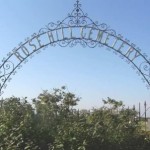 I just published a post at my Rose Hill Cemetery; Macon, Georgia blog I think some of you might enjoy. And the Road Goes on Forever: Duane Allman & Berry Oakley is now live.
I just published a post at my Rose Hill Cemetery; Macon, Georgia blog I think some of you might enjoy. And the Road Goes on Forever: Duane Allman & Berry Oakley is now live.
(This posting is from Southern Graves. Click the link to view the full article from its original source.)
Misadventures in Indexing
April 14, 2011 by Chris
Filed under Articles, Genealogy for Beginners, Latest News
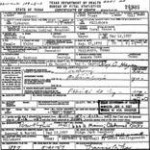 Fine. I admit it. My indexing numbers are nowhere as big as Renee Zamora’s. That’s not to say I don’t find it as meaningful. In fact, my problem is that sometimes I find it too meaningful. Take last week. I made the mistake of taking a batch of Louisiana Death certificates. Soon I was so drawn into these people’s lives, that it took all week to get one batch done. I started on the first certificate. Cause of death? Drowning. How sad. How old was this person? A ten year old boy. Wow; that is sad. Why did someone write “refugee” at the top?
Fine. I admit it. My indexing numbers are nowhere as big as Renee Zamora’s. That’s not to say I don’t find it as meaningful. In fact, my problem is that sometimes I find it too meaningful. Take last week. I made the mistake of taking a batch of Louisiana Death certificates. Soon I was so drawn into these people’s lives, that it took all week to get one batch done. I started on the first certificate. Cause of death? Drowning. How sad. How old was this person? A ten year old boy. Wow; that is sad. Why did someone write “refugee” at the top?
Next certificate. Also said “refugee” at the top. Cause of death? Drowning! Wait a minute. Same name? No, this one was North Hudson’s five year old name sake. Same date? Yes, 8 July 1927. Both in Port Barre, St. Landry Parish. Wow. Opelousas is crossed out and Porte Barre written in. Wonder what happened.
Third and fourth certificates. Also refugees who drowned on 8 July 1927. Both named Hudson. North Hudson was here again, as informant. Does that mean he had to identify the bodies?
Fifth, sixth, seventh. All children of Delphine Thornton, ages 13, 9 and 5. All 8 July 1927 in Port Barre. Oh, my goodness. She lost three children in whatever happened.
What did happen? It didn’t take very long before Google had uncovered the Great Flood of 1927. The Mississippi had overflowed her banks during the spring runoff. Displaced “refugees” were evacuated to neighboring communities.
I’m still unclear of all the goings on, but the flood waters seem to have lasted for months. On 8 July 1927 I think the levee protecting Port Barre failed. It fell to the medical examiner in Opelousas to perform the terrible last reuniting of lost family members. I found myself feeling awkward, standing in the back, an unbidden guest, witnessing this pervasively private moment. Then I thought that perhaps, if caring members of these families ever come looking for them, my indexing will easily bring them to this very same spot, let them see what I am seeing. I will have quietly slipped out the back, letting loving family unite again across time. And grieve. And remember.
(This posting is from The Ancestry Insider.)
Would the Real Mr. “Whelan” (“Whalen”?) Please Stand Up
April 14, 2011 by Chris
Filed under Articles, Genealogy and Surnames, Genealogy for Beginners, Introduction to Genealogy
 According to Irish surname specialists, the surname “Whelan” is the 79th most common surname in Ireland. Thousands of Irish immigrants named “Whelan” came to America in the last two centuries. A large number of them saw their family name recorded “Whalen” by government immigration and census officials on government forms. Consequently, when searching for your long lost Irish ancestor “Joseph Whelan” or “Josephine Whelan”, be sure to look for “Whalen” also. Surname spelling variations occur with other Irish surnames also. To my bemusement, my global search for the surname “Whalen” for the entire country of Ireland in the Griffiths Valuation Survey (1840 – 1860) database produced zero households, and in the 1901 Irish census only 9 households.
According to Irish surname specialists, the surname “Whelan” is the 79th most common surname in Ireland. Thousands of Irish immigrants named “Whelan” came to America in the last two centuries. A large number of them saw their family name recorded “Whalen” by government immigration and census officials on government forms. Consequently, when searching for your long lost Irish ancestor “Joseph Whelan” or “Josephine Whelan”, be sure to look for “Whalen” also. Surname spelling variations occur with other Irish surnames also. To my bemusement, my global search for the surname “Whalen” for the entire country of Ireland in the Griffiths Valuation Survey (1840 – 1860) database produced zero households, and in the 1901 Irish census only 9 households.
Lesson Learned: If at first you don’t succeed in finding an ancestor with one Irish surname spelling, try a slight variation of that surname spelling to see what you might find.
Let us know what Irish surname spelling variations that you’ve encountered in your research and post them here.
See more Irish family history articles and lessons learned in earlier posts below and in the archives.
(This posting is from The Ballycastle Blog: Irish Genealogy and More.)
50 Best Blogs for Genealogy Geeks by Online University
May 20, 2010 by Chris
Filed under Articles, Genealogy for Beginners, Latest News
 Genealogy Beginner was rated within the top 50 Best Blogs for Genealogy Geeks online by Online University. We’re proud to share the spotlight with some great fellow genealogy bloggers. You can check out the full list at Online University. They break the list up into four key sections: General, Specific Research Projects, Libraries and Resources, News.
Genealogy Beginner was rated within the top 50 Best Blogs for Genealogy Geeks online by Online University. We’re proud to share the spotlight with some great fellow genealogy bloggers. You can check out the full list at Online University. They break the list up into four key sections: General, Specific Research Projects, Libraries and Resources, News.
The number one blog for each category included:
- General – DearMYRTLE’s Genealogy Blog: Myrtle helps those looking to piece together their family histories learn about the genealogy process.
- Specific Research Projects – AnceStories: The Stories of My Ancestors: Follow this blogger’s journey to learn how to go about your own research project.
- Libraries and Resources – Ancestry.com Blog: Ancestry.com keeps readers and site users updated on genealogy and online research.
- News – GenealogyBlog: This is a daily news blog for genealogy enthusiasts, which outlines special events, collections, research tips, and more.
Thanks again to the great people doing good work over at Online University. We appreciate the mention.
